Australia’s structural housing shortage is well-documented, with AMP chief economist Shane Oliver estimating that the nation was short at least 200,000 homes in 2024:
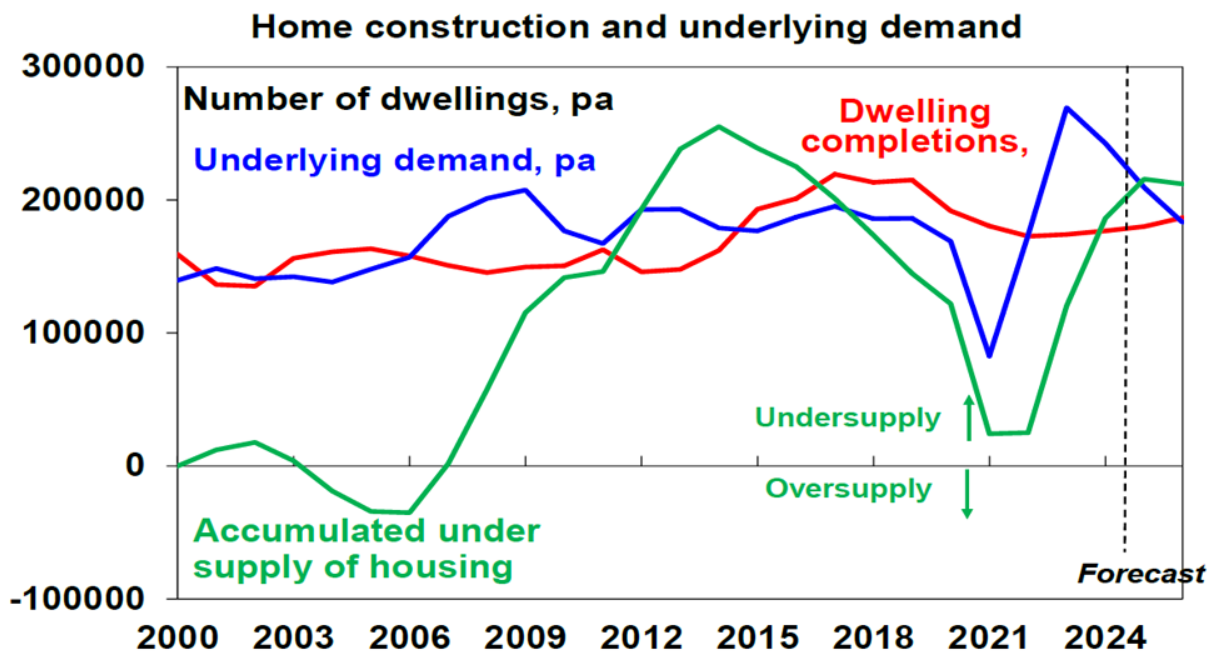
Source: Shane Oliver (AMP)
Former senior immigration department bureaucrat Abul Rizvi believes that Australia’s net overseas migration will average around 300,000 annually under current policy settings, which is around 15% higher than Treasury forecasts.
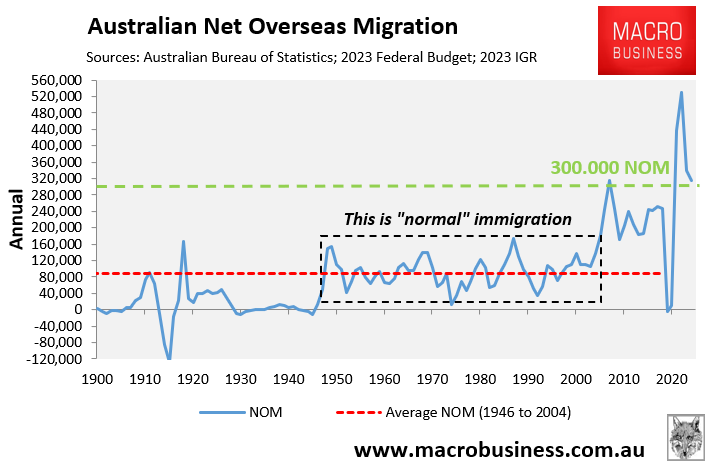
If Australia’s population grows 15% faster than projected, the National Housing Supply and Affordability Council (NHSAC) forecasts that the nation’s housing shortage will increase by around 200,000 over the five years to 2028-29:
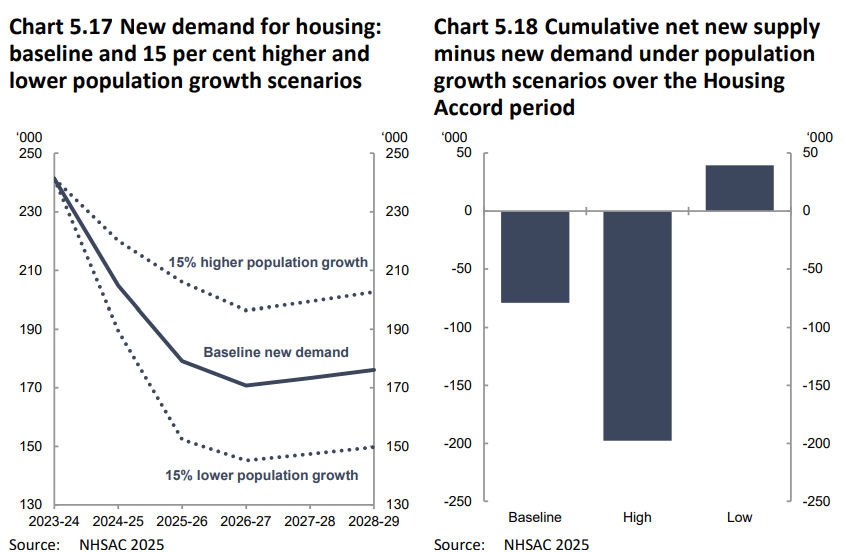
The gulf between immigration demand and housing supply will obviously worsen the rental crisis, which is already experiencing record low rental vacancy rates and listings, according to Cotality.
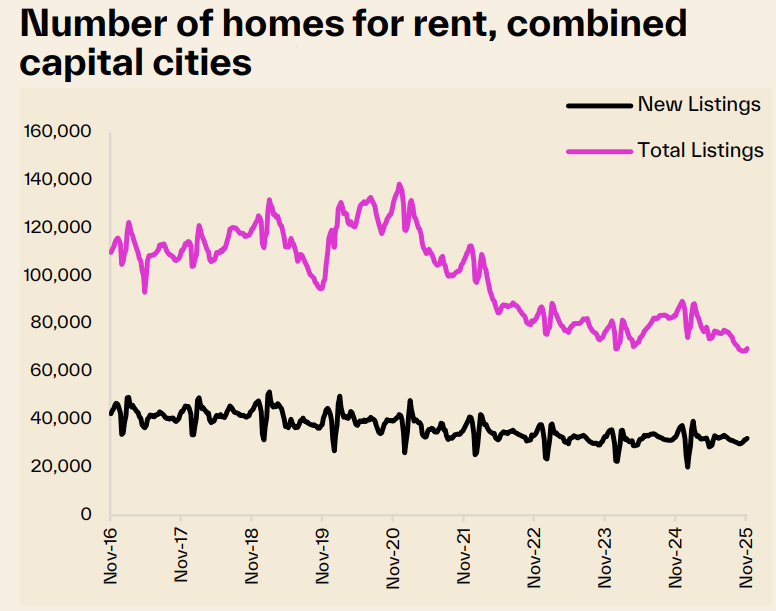
Source: Cotality
The Australian’s James Kirby highlighted the nation’s other housing shortage: the dearth in homes listed for sale, which is placing upward pressure on prices.
“New listings are not just hard to find, they are increasingly thin on the ground”, Kirby wrote. “Property research group Cotality reports that the total number of listings across the nation is a stunning 18% below the long-term average. There were just 127,800 homes for sale over the month of October”.
“Moreover, it’s in the mid-sized capitals where home prices are rising the fastest that listings are at a relative low. House prices in Perth and Brisbane are up 82% and 84%, respectively, over the last five years, but sellers are scarce”.
Independent property analyst Cameron Kusher added that the historically tight rental market is discouraging home buyers from selling because there is nowhere for them to go once they have sold.
“The number of properties on the market is down about 20% or 30% from what we were seeing early on in the pandemic”, he said.
“So you’ve just got a really tight supply, and there’s a few things that are really driving this”.
“People know that they can sell their property and get a really good price for it, but the rental markets are also so tight that people can’t even transition through the rental market once they’ve sold their property to buy their next property”.
“As a result of that, people are just going: ‘I can’t find what I want to buy. I’m not sure that I’ll be able to rent a place that I want to rent in or that’s appropriate. So I’ll just stay where I am’”, Kusher said.
The data speaks for itself. As illustrated below by Cotality, total for-sale listings across Australia were 14.3% lower than the same time last year as well as down 18.3% from the 5-year average:
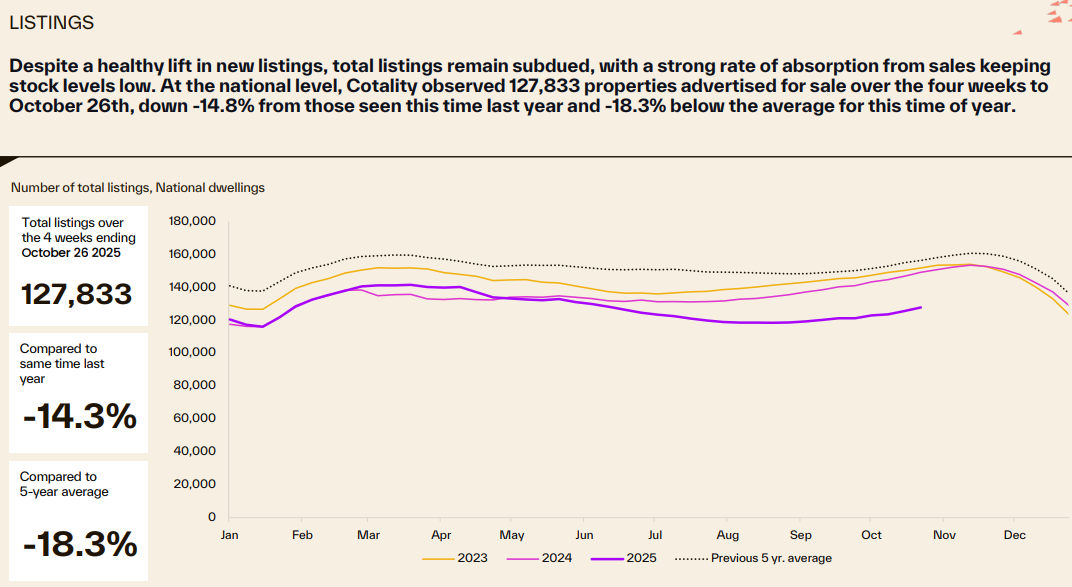
Source: Cotality
The next chart shows that while for-sale listings have fallen across all markets, they are down the most across the smaller capital cities:
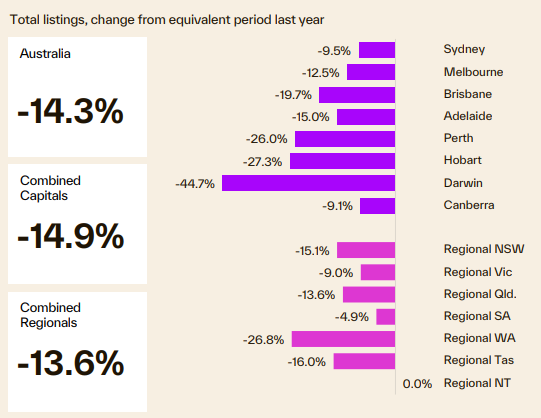
Source: Cotality
Australia’s housing market is experiencing a bull market, fuelled by strong investor and first home buyer demand. Since prices are expected to rise, it makes sense for vendors to wait, as they can anticipate a higher sale price in the future.

